|
Impacts on Terrestrial and Freshwater Biodiversity: Habitats and Ecosystems
|
|
|
What is Happening |
What might happen |
|
Australia wide
|
- Woody thickening - an increase in the density of trees and shrubs at the expense of grassland species - is occurring across all major Australian ecosystems
- For some terrestrial species, increased woody vegetation may provide more habitat, but other species that rely on open habitats could be threatened or outcompeted by encroaching shrubs and trees108
|
- Thickening is predicted to be a major issue as climatic changes progress 109
- Some species will be directly threatened by woody thickening - the endangered golden shouldered parrot, endemic to Cape York Peninsula, is threatened by increased predation risk and impacts of thickening on seasonal food availability110
- Prescribed burning can stall thickening but timing of the burn is vitally important - in the north, burning in the late dry season and storm-season favours the maintenance of grassland, while burning at other times favours the woody species 111
|
|
Mediterranean woodland and shrublands
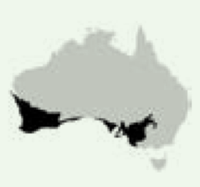
|
- Lower annual rainfall and increased abstraction have lowered groundwater levels and negatively affected native vegetation 112
- Tree mortality and progressive floristic change towards drought tolerant species in Banksia woodlands113,114, 115,116
- Lower rainfall and seasonal shifts in intensity have resulted in declines in streamflow, soil water storage and groundwater levels, affecting flora117,118
|
- Projected declines in rainfall,119 streamflow120 and groundwater levels 121 resulting in ecosystem stress and changes in community composition122,115, 123
- Projected temperature increases and rainfall declines may negatively affect South West Australian Floristic Region’s endemic plant diversity124,125,126
- Suitable habitat will decline for many endemic Banksia species 125,126
- Community composition changes as susceptible species decline in Western Australia125
|
|
Temperate forests, woodlands and grasslands (including montane and rainforest)
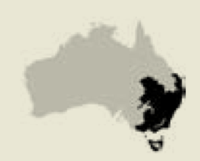
|
- Increase of mire wetland associated with contraction of eucalypt woodland in south-east Australia127
|
- Production could increase where rain is not limiting, due to increased CO2128,129
- Reduced forest cover associated with soil drying128
- Generally earlier grass130and tree flowering131
- Conversion of grassland to woodland or shrubland
- Loss of carbon stocks through changed fire regimes and drying132,133,134,135
|
|
Tropical savanna and grasslands
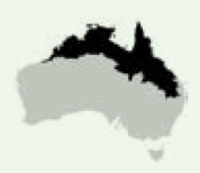
|
- Plant mortality following drought136,137
- Expansion of rainforest at expense of eucalypt savanna and grassland in Northern Territory and Queensland associated with increased rainfall and CO2138,139
- Increasing canopy cover in tropical savannas140
|
- Shift in composition could occur from perennial Mitchell grasses to annual grasses or forbs141
- Shift from C3 to C4 plants142
|
|
Tropical and sub-tropical rainforest
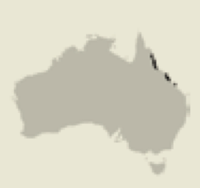
|
- No reported impacts at time of press.
|
- Increasing floristic turnover for species at the altitude of the cloud base143
- Changes to structure of rainforest canopy144
- Damage to shallow-rooted species from high-intensity cyclones145 - and subsequent potential for weed invasion146
- Increased growth of vines with increased CO2, leading to tree mortality147
- Drying of tropical montane cloud forest, reducing productivity148
- Rainforest contraction with increased fire frequency, favouring fire-tolerant species149
- Short term heat events and drought likely to affect cool rainforest species more than dry rainforest species150
|
|
Arid and semi-arid regions
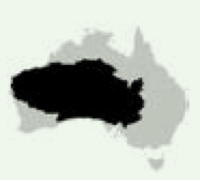
|
- Vegetation thickening in semi-arid mulga woodlands in southwest Queensland151
|
- Altered competition between C3 and C4 grasses, favouring C4 species142
- Relatively flat landscape may mean community change will be widespread and more extensive than in other regions, as there is little opportunity for altitudinal shifts152
- Reduction in patches of fire-sensitive mulga in spinifex grassland could lead to increase in spinifex153
|
|
Alpine regions
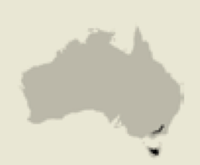
|
- Decline in depth and duration of snow cover154
- Tree line shifts of 30-40 m in altitude in 25 years in Victoria155
- Increase in shrub cover and decrease in grass cover particularly in response to drought 156
|
- Decline in specialist alpine ecosystems e.g. snow patch herb fields, cushion plants 157
- Contraction of fens and bogs158
- Native and feral mammals projected to move to higher elevations159
- Encroachment of snow gums into subalpine grassland and higher elevations155
- Frost damage in snow gums due to interaction between warming and increased CO2 160
- Generally earlier time of flowering, seed set and budding with associated fitness effects161,162
|
|
Inland wetlands and waterways (including peatlands)
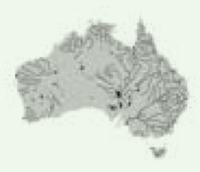
|
- General reductions in flow and changed seasonality of flow, causing drying163,164
- Contraction of Melaleuca swamp forests in Kakadu due to intrusion of salt water165
- Drought-related mortality in floodplain forests166
|
- Degradation and drying of peatlands127; drying of wetlands; loss of seasonal ponds127
- Drought conditions likely to become more common in Murray-Darling Basin, south-east and south-west Western Australia163
- More frequent burning of peaty sediments in wetlands167
- Loss of taxa intolerant of temperature rises168
- Shifts to species-poor, salt-tolerant biota in southern wetlands with drying climate 164
|
|
Islands (including Heard, McDonald, Macquarie, Frasier, Christmas, Torres Straits; Lowe Howe and Norfolk Island groups)
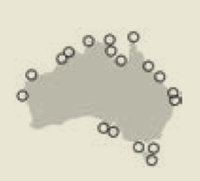
|
Faster seed maturation with increase warming169 |
- Change in mossy cloud layer may lead to reduced occult precipitation which affects the ability of vegetation to harvest moisture109
- Changes in vegetation cover and loss of endemic flora and fauna
- Erosion of dunes, coastal cliffs and rocky shore platforms
- Changed fire regimes
- Deglaciation; establishment of introduced species in ice-free ground 170
- Fundamental changes in the condition of subantarctic lakes and ponds109
|
|
Coastal (estuarine, sandy, rocky)
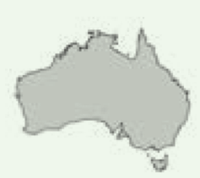
|
- Increase in mangrove extent (1974-2004) in Northern Territory, likely due to rising sea levels and increased CO2171
- Landward mangrove expansion linked to increased rainfall in the south east172
- Change to structure and composition in Tasmanian saltmarsh community173
|
- Marine inundation of terrestrial systems with sea level rise174
- Rocky shore and saltmarsh species vulnerable to total loss of habitat175
- Saltmarsh and wetlands affected by landward movement of mangroves138
- Coastal squeeze - coastal habitats trapped between landward boundaries and rising sea level176
|








